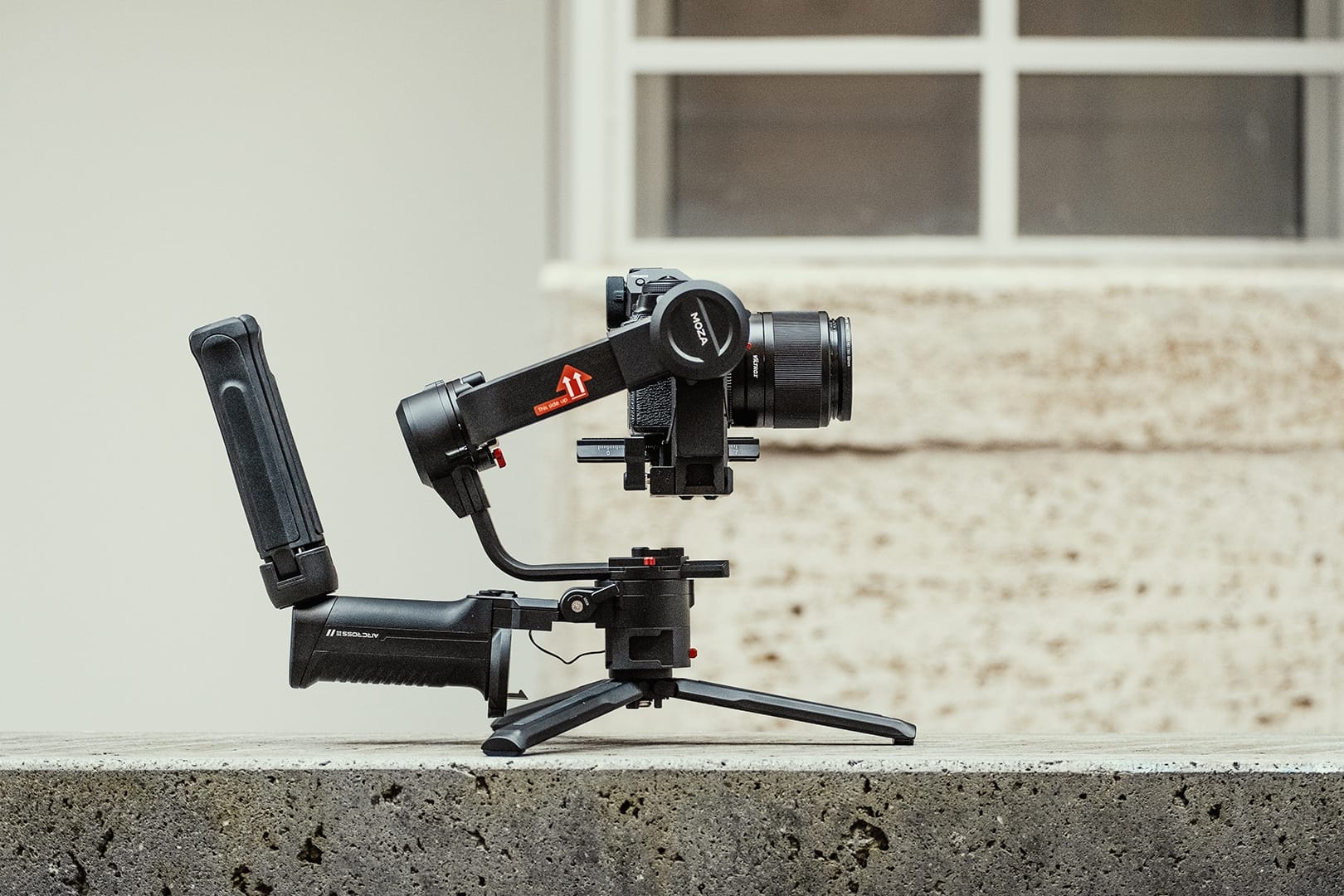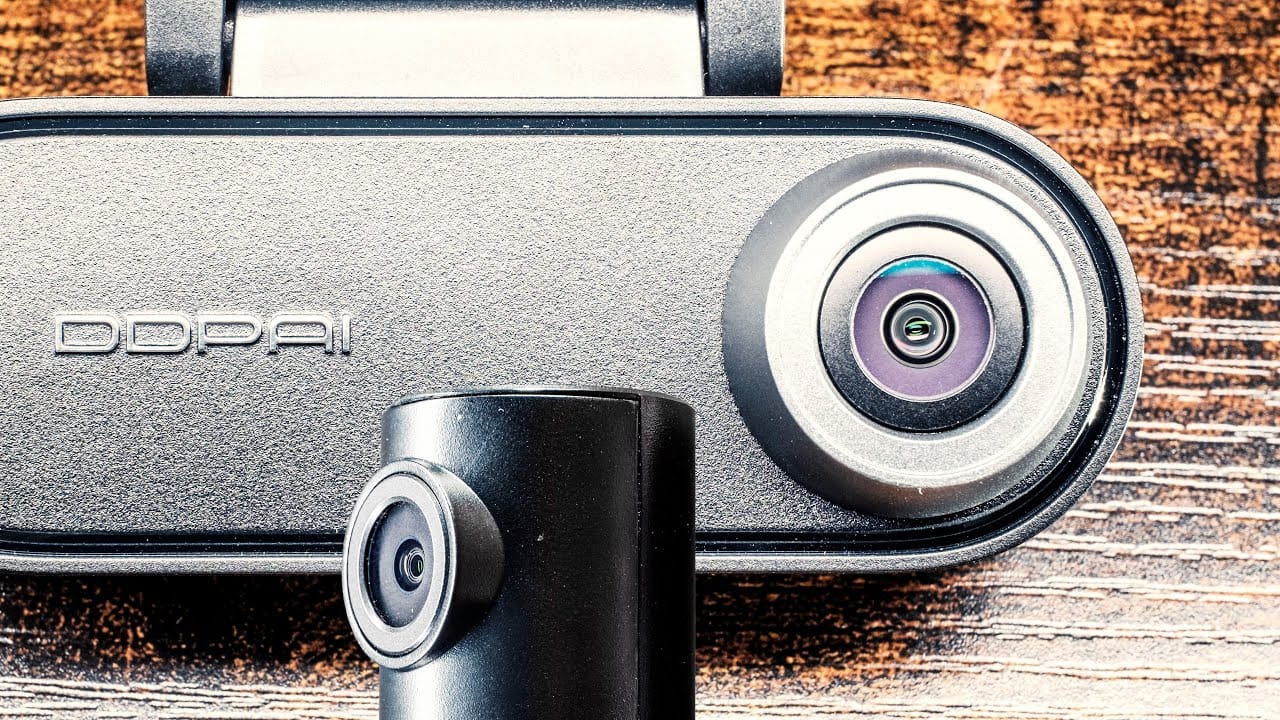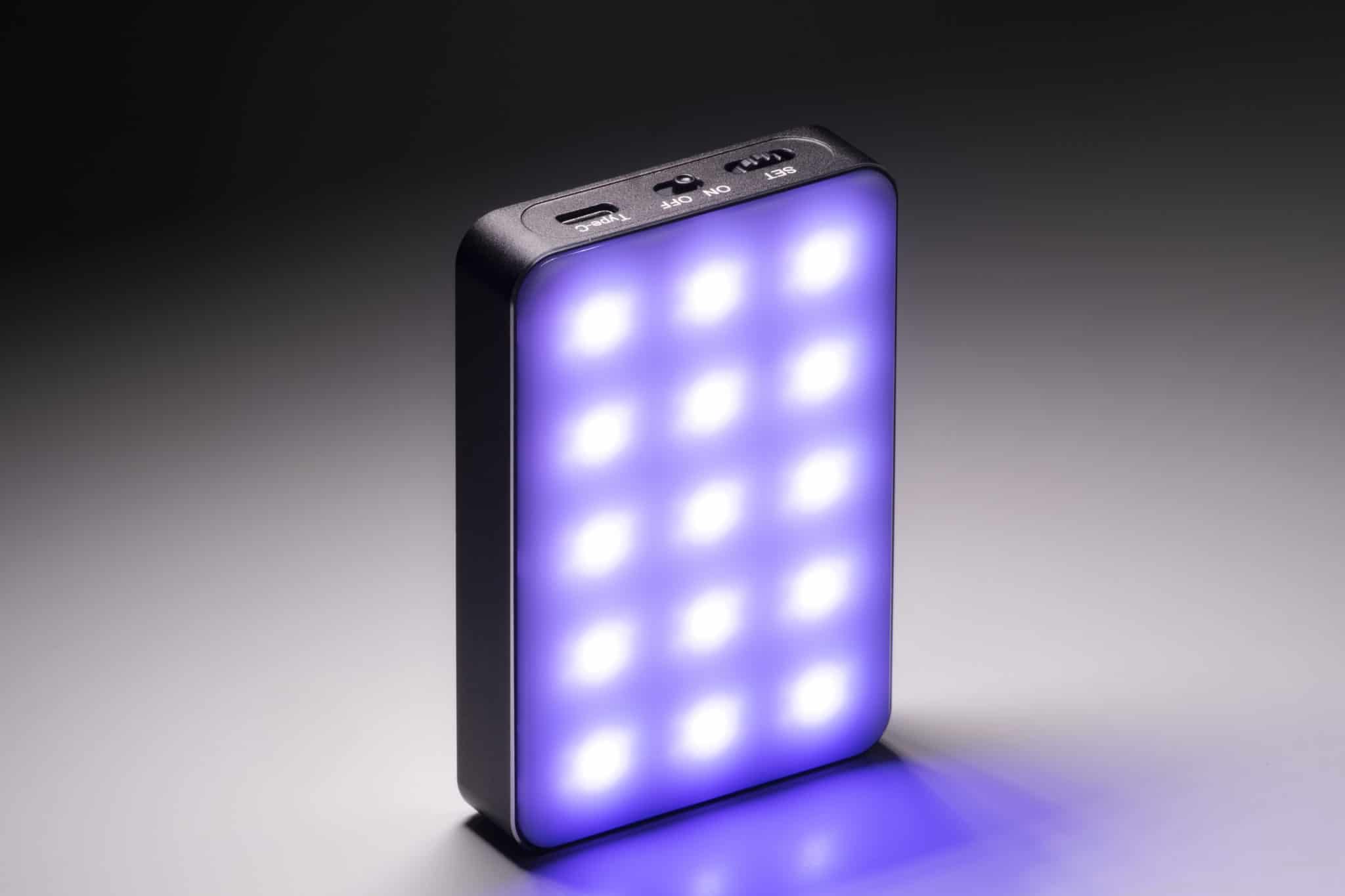The Moza AirCross 3 is a complete re-design of the previous model. While the motorized gimbal can be held like most other one-hand gimbals it can also be set up in a very different shape. The grip can be flipped to the back and two small tripods or extensions can be used to hold the gimbal with two hands. This setup is especially useful to get inverted low angle shots.
Payload
The AirCross 3 has a maximum payload of 3.2 which is quite a lot when using mirrorless. Keep in mind that it always comes down to the balancing and seize of the camera, lens and accessories like follow focus or microphone and not just the weight itself. In comparison the Air 2S has a payload of 4.2kg but is also aimed at bigger setups like cinema cameras or DSLRs.
Buttons
The menu and button layout is simple and easy to navigate. On the side of the control panel is the on/off button. The joystick is flat and rather small. The menu button can be used to access the settings and to change the modes.
If a camera is connected via Bluetooth the red button can be used to start and stop recording.
The so called “smart trigger” button on the back of the grip can be used to lock all axis. This is useful if no vertical or horizontal motion is wanted.
Stability
While these new types of gimbals have a huge amount of features the most important question is of course: How steady is the motion? The good news is that even without properly balancing the camera the gimbal does a great job at keeping all axis smooth and steady. There’s no vibrating, neither is the horizon off which can be an issue with some gimbals.
Mobile app
Important is of course also the mobile app compatibility. The Moza Master app supports most of the major features like remote control of all axis. Useful is also the manual speed adjustment of the axis motion. This allows for very slow and smooth motion shots.
Camera settings can also be accessed as long as the camera model is supported.
Battery & power
The internal battery can be charged via USB-C and lasts for 15-18 hours depending on the mode and whether it’s connected to the mobile app and camera or not. Charging takes around 2 hours with a fast charger which is rather quick considering the long run time.
Mounting options
When it comes to mounting options, the gimbal has quite a few. There are three ¼” screw-in options. One is at the bottom of the grip, another one on the lower back and the third one becomes visible when unfolding the grip. Above the grip is a cold show mount on each side to mount accessories like lights or a handle.
Transformable setup
The new design is certainly one of the biggest reasons to use the AirCross 3. I personally prefer a dual-handle setup for longer shoots because it’ more stable and is easier to hold.
While the axis are rather big to fit DSLRs or mirrorless cameras the regular grip is rather short which means I always mount a tripod below to hold on to.
Built quality
The built quality is high because it’s overall well-designed and made from metal. The AirCross 2 has a plastic housing which makes it lightweight but also feels less rugged.
This is certainly an alternative to the bigger and heavier Air 2S if you don’t shoot with heavy setups.
The only thing that I wouldn’t do when using the gimbal for longer periods of time is to use the small tripods to hold on to. It makes sense to get dedicated extensions because the small tripod legs sometimes move a little.
AI Brick module
There’s also an artificial intelligence module being released in the future which allows to control the gimbal simply by using gestures, for example to track a person.
Conclusion
When it comes to the price the cheapest AirCross 3 kit will cost 469 USD, so almost 100 USD more than the previous model. From a financial point of view the Air 2S and the AirCross 3 are very similarly priced which isn’t very surprising considering the premium built quality of the AirCross 3.
Where does the AirCross 3 fit in? It mostly comes down to the ergonomics and the design of the gimbal. While it certainly has all the latest features, I personally think the multiple setups are what makes this tool stand out.
Weight and seize certainly play a big role when it comes to choosing the right gimbal. I barely shoot with camera setups over 2.5kg so for me weight is not really a concern but it might be for you.
I highly recommend trying gimbals before buying them since it all depends on personal preference. For some people a dual-handle is the right fit and for others it may be a simple one-hand design.


